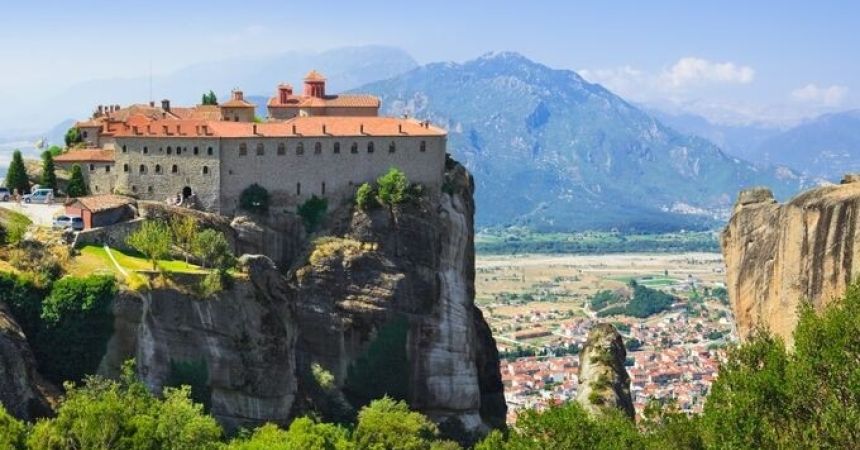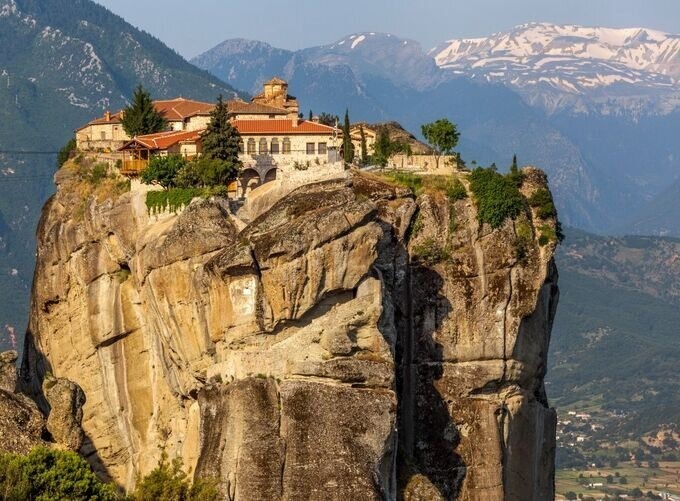
UNESCO Sites in Greece | Explore the Heritage:
Greece, the cradle of Western civilization, is renowned for its rich history, ancient ruins, and vibrant culture. The country is home to numerous UNESCO World Heritage Sites, each offering a unique glimpse into its glorious past. From iconic landmarks to hidden gems, these sites reflect Greece's profound influence on art, architecture, and philosophy. Join us as we Visit World Heritage Sites in Greece, delving into their historical significance and cultural importance.
The Acropolis of Athens
Historical Significance
The Acropolis of Athens is one of the most iconic landmarks in the world, symbolizing the birthplace of democracy and Western civilization. This ancient citadel, perched high on a rocky hill, has been a center of religious and political life for millennia.
Key Attractions Athens
- The Parthenon: Dedicated to Athena, the goddess of wisdom and war, the Parthenon is a masterpiece of classical architecture. Its Doric columns and intricate sculptures are a testament to ancient Greek art.
- The Erechtheion: Known for its Caryatids, the sculpted female figures serving as architectural supports, this temple is dedicated to both Athena and Poseidon.
- The Propylaea: The grand entrance to the Acropolis, showcasing impressive columns and architectural elegance.
Cultural Importance
The Acropolis stands as a symbol of Greek cultural and intellectual achievements. It attracts millions of visitors annually, who come to marvel at its architectural splendor and historical significance.
Delphi: The Navel of the World
Historical Significance
Delphi was considered the center of the world in ancient Greek religion, home to the famous Oracle of Apollo. It was a major religious and cultural hub, attracting pilgrims from across the Greek world.
Key Attractions of Delphi
- The Temple of Apollo: The centerpiece of Delphi, where the Pythia delivered her prophecies. The temple’s ruins evoke the grandeur of ancient rituals.
- Theatre and Stadium: The ancient theatre offers stunning views of the valley below, while the stadium hosted the Pythian Games, similar to the Olympic Games.
- Sanctuary of Athena Pronaia: Located near the main site, this sanctuary features the Tholos, a circular building with a unique design.
Cultural Importance
Delphi was a symbol of unity for the Greek city-states, hosting the Pythian Games and serving as a religious center. Today, it offers insights into ancient Greek spirituality and architecture.
Olympia: The Birthplace of the Olympic Games
Historical Significance
Olympia is the birthplace of the Olympic Games, held in honor of Zeus. This ancient site was a major religious sanctuary and a hub for athletic competition.
Key Attractions Olympia
- The Temple of Zeus: Once home to one of the Seven Wonders of the Ancient World, the statue of Zeus. The temple’s remains reflect its monumental scale.
- The Ancient Stadium: Walk through the ancient stadium where the Olympic Games were held. Learn about the origins and significance of these games.
- The Archaeological Museum of Olympia: Discover artifacts from the ancient site, including sculptures and tools used in the games.
Cultural Importance
Olympia symbolizes the spirit of athleticism and competition that continues to inspire the modern Olympic Games. It also reflects ancient Greek religious practices and architectural prowess.
Meteora: Monasteries in the Sky
Historical Significance
Meteora, meaning “suspended in the air,” is known for its monasteries perched atop towering rock formations. These monasteries were built by monks seeking solitude and spiritual elevation.
Key Attractions for Meteora
- Monasteries: Visit the six monasteries still in operation, including the Great Meteoron and Varlaam. Each offers a glimpse into monastic life and Byzantine art.
- Hiking Trails: Explore the surrounding landscape on foot, discovering hidden caves and enjoying panoramic views.
- Kalambaka: The nearby town of Kalambaka offers accommodations, restaurants, and additional attractions and Tours of Kalambaka.
Cultural Importance
Meteora is a testament to the spiritual devotion and architectural ingenuity of the monks who built these monasteries. It is a place of pilgrimage and a UNESCO World Heritage Site for its cultural and natural significance.
Rhodes: The Island of the Knights
Historical Significance
Rhodes has been a strategic and cultural crossroads for centuries, known for its medieval Old Town and ancient ruins. It was a major center of the Knights Hospitaller.
Key Attractions for Rhodes
- Rhodes Old Town: A UNESCO World Heritage site, the medieval Old Town is one of the best-preserved in Europe. Explore the Palace of the Grand Master, the Street of the Knights, and the medieval walls.
- Lindos: A picturesque village with white-washed houses, narrow streets, and a stunning acropolis overlooking the sea.
- Ancient Kamiros: Explore the ruins of this ancient city, which offer insights into Hellenistic urban planning.
Cultural Importance
Rhodes represents the blending of different cultures and eras, from ancient Greek to medieval European influences. Its well-preserved historical sites attract scholars and tourists alike.

Delos: The Birthplace of the Gods
Historical Significance
According to Greek mythology, Delos is the birthplace of Apollo and Artemis. It was an important religious and commercial center in ancient Greece.
Key Attractions Delos
- Sanctuary of Apollo: Explore the ruins of temples, altars, and statues dedicated to Apollo.
- Terrace of the Lions: Famous for its marble lion statues that once guarded the sacred lake.
- Ancient Theatre: Visit the ancient theatre, which hosted performances and gatherings.
Cultural Importance
Delos was a major religious sanctuary and a bustling trading hub. It offers a wealth of archaeological treasures that provide insights into ancient Greek religion and society.
Epidaurus: The Sanctuary of Asclepius
Historical Significance
Epidaurus was known for its sanctuary dedicated to Asclepius, the god of medicine. It was a major healing center in ancient Greece.
Key Attractions Epidaurus
- Ancient Theatre: Renowned for its acoustics and design, the theatre is still used for performances today.
- Sanctuary of Asclepius: Explore the ruins of temples, baths, and other buildings associated with healing practices.
- Archaeological Museum: Discover artifacts related to ancient medicine and daily life in Epidaurus.
Cultural Importance
Epidaurus represents the ancient Greeks' dedication to health and well-being. Its theatre and sanctuary highlight the cultural and scientific achievements of the time.
Mystras: The Byzantine City
Historical Significance
Mystras was a major center of the Byzantine Empire, known for its well-preserved medieval architecture and significant historical events.
Key Attractions Mystras
- Palace of the Despots: Explore the ruins of this grand palace, which offer insights into Byzantine governance and culture.
- Churches and Monasteries: Visit the many churches and monasteries adorned with frescoes and Byzantine art.
- Archaeological Site in Greece: Wander through the remains of this once-thriving city, located on a hillside overlooking the Spartan plain.
Cultural Importance
Mystras is a symbol of Byzantine splendor and resilience. Its well-preserved ruins and art make it a valuable site for understanding medieval Greek history and culture.
Vergina: The Royal Tombs
Historical Significance
Vergina is home to the royal tombs of ancient Macedon, including the tomb of Philip II, the father of Alexander the Great. It is a site of immense archaeological importance.
Key Attractions Vergina
- Royal Tombs: Visit the impressive underground tombs adorned with frescoes and treasures.
- Great Tumulus: Explore the burial mound containing the tombs of Macedonian royalty.
- Archaeological Museum: View the artifacts recovered from the tombs, including gold items, weapons, and ceremonial objects.
Cultural Importance
Vergina offers a glimpse into the wealth and power of ancient Macedon. It is a testament to the artistry and craftsmanship of the time, as well as the historical significance of the Macedonian dynasty.
Corfu: The Island of Influences
Historical Significance
Corfu has a rich history influenced by various cultures, including the Greeks, Romans, Venetians, French, and British. Its architecture and traditions reflect this diverse heritage.
Key Attractions for Corfu
- Old Town of Corfu: A UNESCO World Heritage site, the old town features Venetian buildings, narrow streets, and historic landmarks.
- Palace of St. Michael and St. George: A neoclassical palace housing the Museum of Asian Art.
- Achilleion Palace: Built by Empress Elisabeth of Austria, this palace is surrounded by lush gardens and offers stunning views.
Cultural Importance
Corfu’s blend of architectural styles and cultural influences make it a unique destination. Its historical sites and natural beauty attract visitors seeking to explore its multifaceted heritage.
Greece: every traveler’s dream holiday spot.
Greece’s UNESCO World Heritage Sites offer a journey through the country’s rich history and cultural legacy. From the iconic Acropolis in Athens to the monasteries of Meteora Trip and the ancient ruins of Delphi and Olympia, these sites provide invaluable insights into ancient Greek civilization and its enduring impact on the world. Whether you are a history buff, a culture enthusiast, or a curious traveler, exploring these sites will deepen your appreciation for Greece’s profound contributions to human heritage. Plan your visit to these remarkable sites and immerse yourself in the stories and beauty of ancient Greece.



